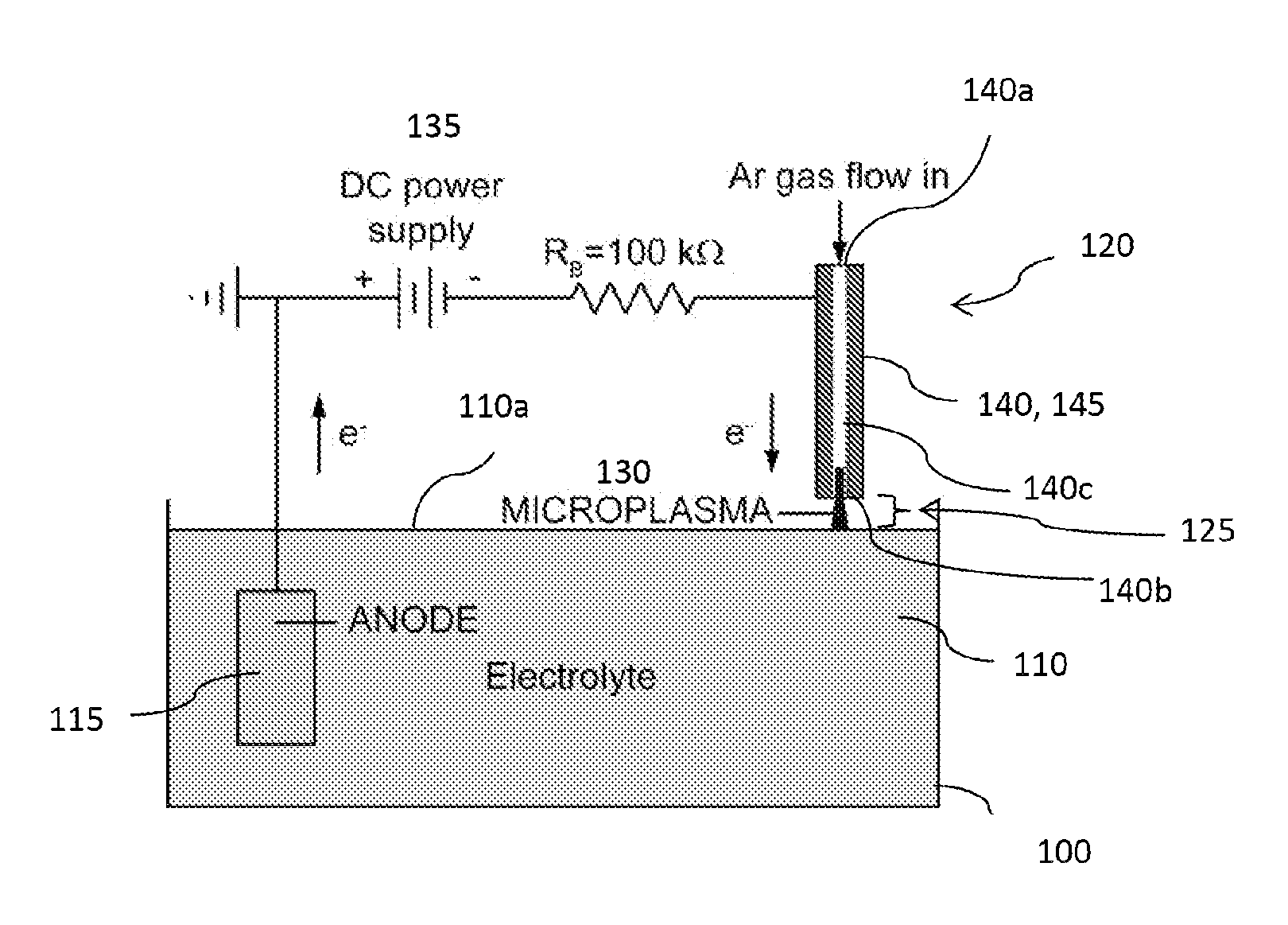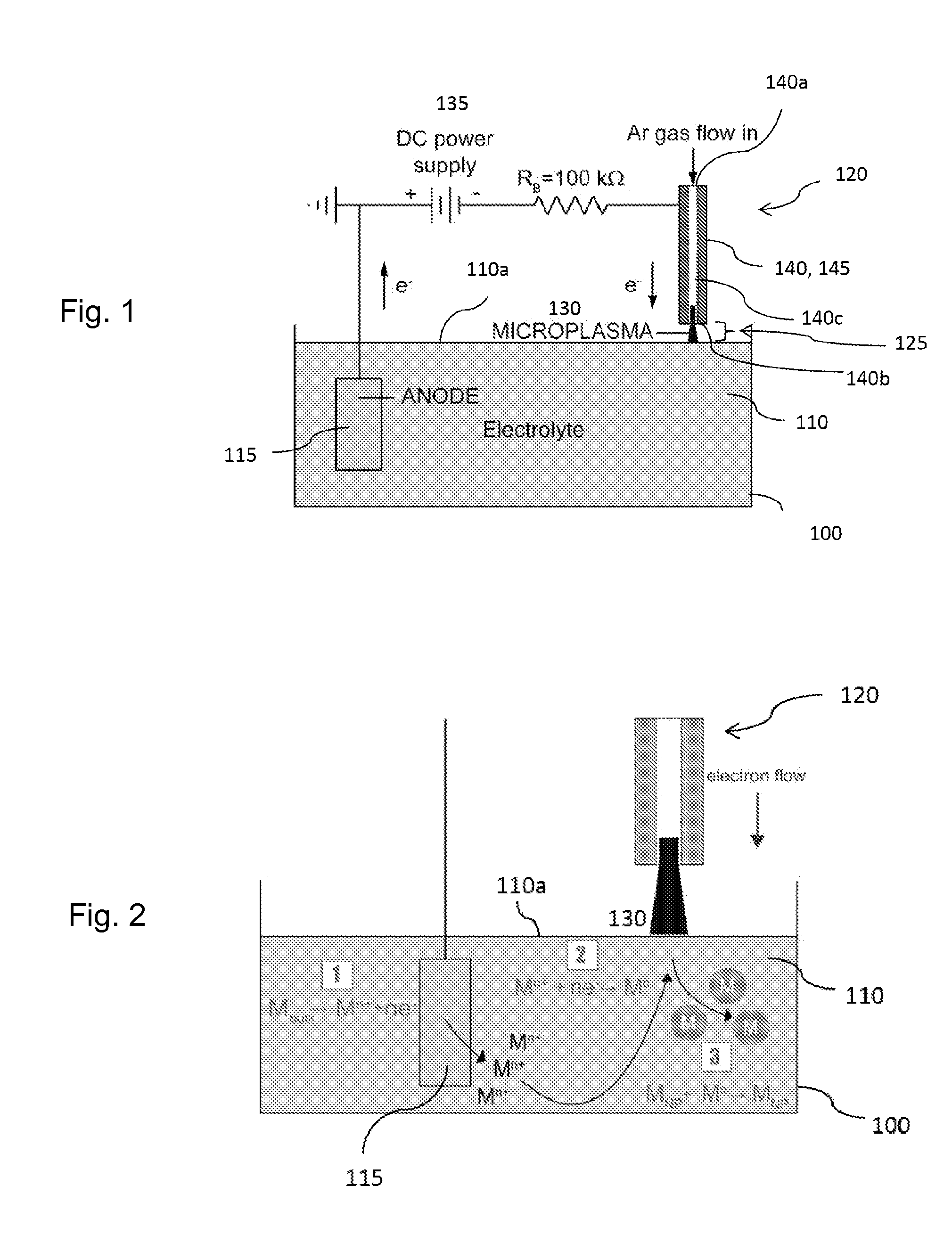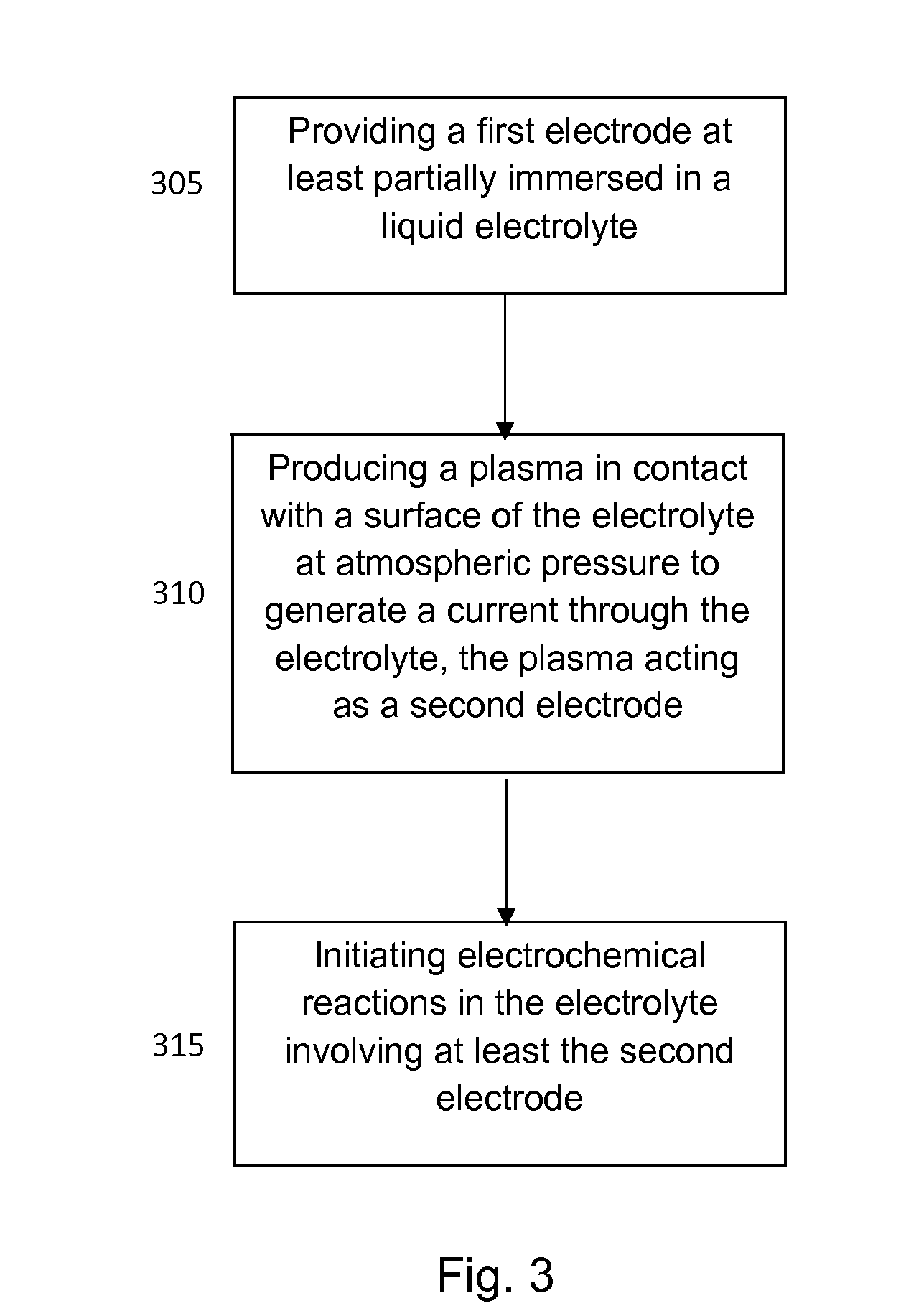Electrochemical cell including a plasma source and method of operating the electrochemical cell
- Summary
- Abstract
- Description
- Claims
- Application Information
AI Technical Summary
Benefits of technology
Problems solved by technology
Method used
Image
Examples
Embodiment Construction
[0019]Recently, spatially confining plasmas to dimensions of 1 mm or less has led to the generation of stable glow discharges at atmospheric pressure. Microplasmas are a unique class of gaseous discharges that operate nonthermally at high pressures, in contrast to arcs. While possessing properties similar to low-pressure glows, microplasmas may be formed in a hollow cathode geometry that can result in a drastic increase in ionization processes through the oscillatory motion of electrons. As a result, microplasmas are characterized by high current densities, high-pressure operation (up to and exceeding atmospheric pressure), and relatively low gas temperatures.
[0020]The inventor has recognized that a microplasma may be coupled with a liquid electrolyte to create a gas-liquid electrochemical cell, where the microplasma functions as a cathode. The presence of electrons and ions in the gas discharge leads to current flow through an aqueous solution which drives electrochemical reactions...
PUM
| Property | Measurement | Unit |
|---|---|---|
| Length | aaaaa | aaaaa |
| Length | aaaaa | aaaaa |
| Diameter | aaaaa | aaaaa |
Abstract
Description
Claims
Application Information
 Login to View More
Login to View More - R&D
- Intellectual Property
- Life Sciences
- Materials
- Tech Scout
- Unparalleled Data Quality
- Higher Quality Content
- 60% Fewer Hallucinations
Browse by: Latest US Patents, China's latest patents, Technical Efficacy Thesaurus, Application Domain, Technology Topic, Popular Technical Reports.
© 2025 PatSnap. All rights reserved.Legal|Privacy policy|Modern Slavery Act Transparency Statement|Sitemap|About US| Contact US: help@patsnap.com



